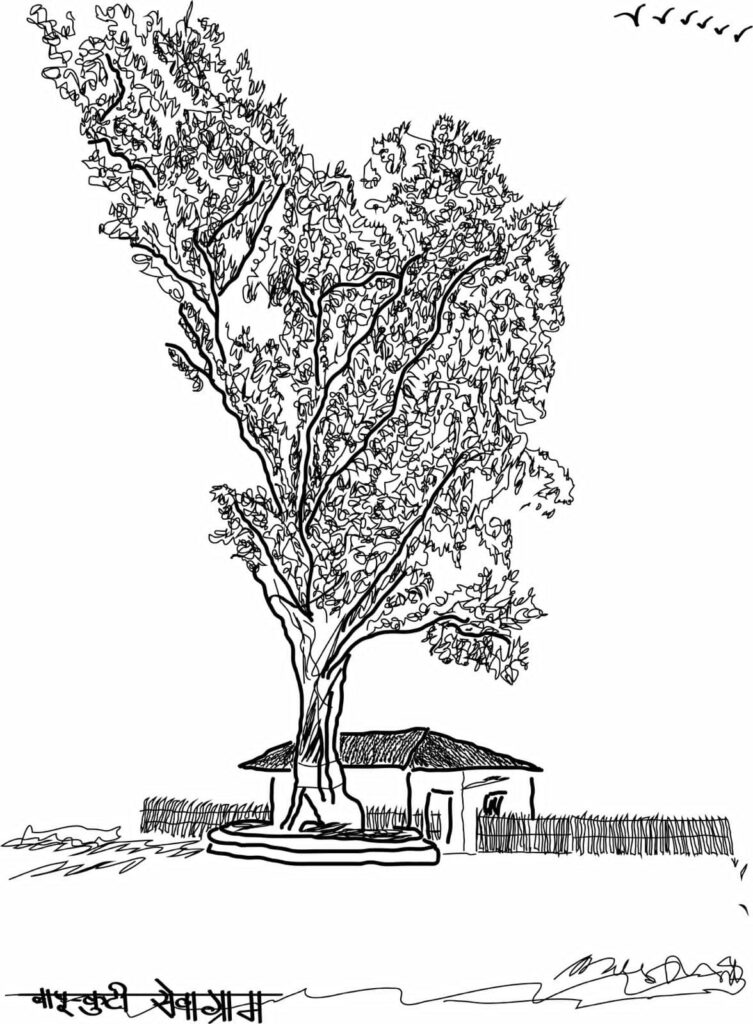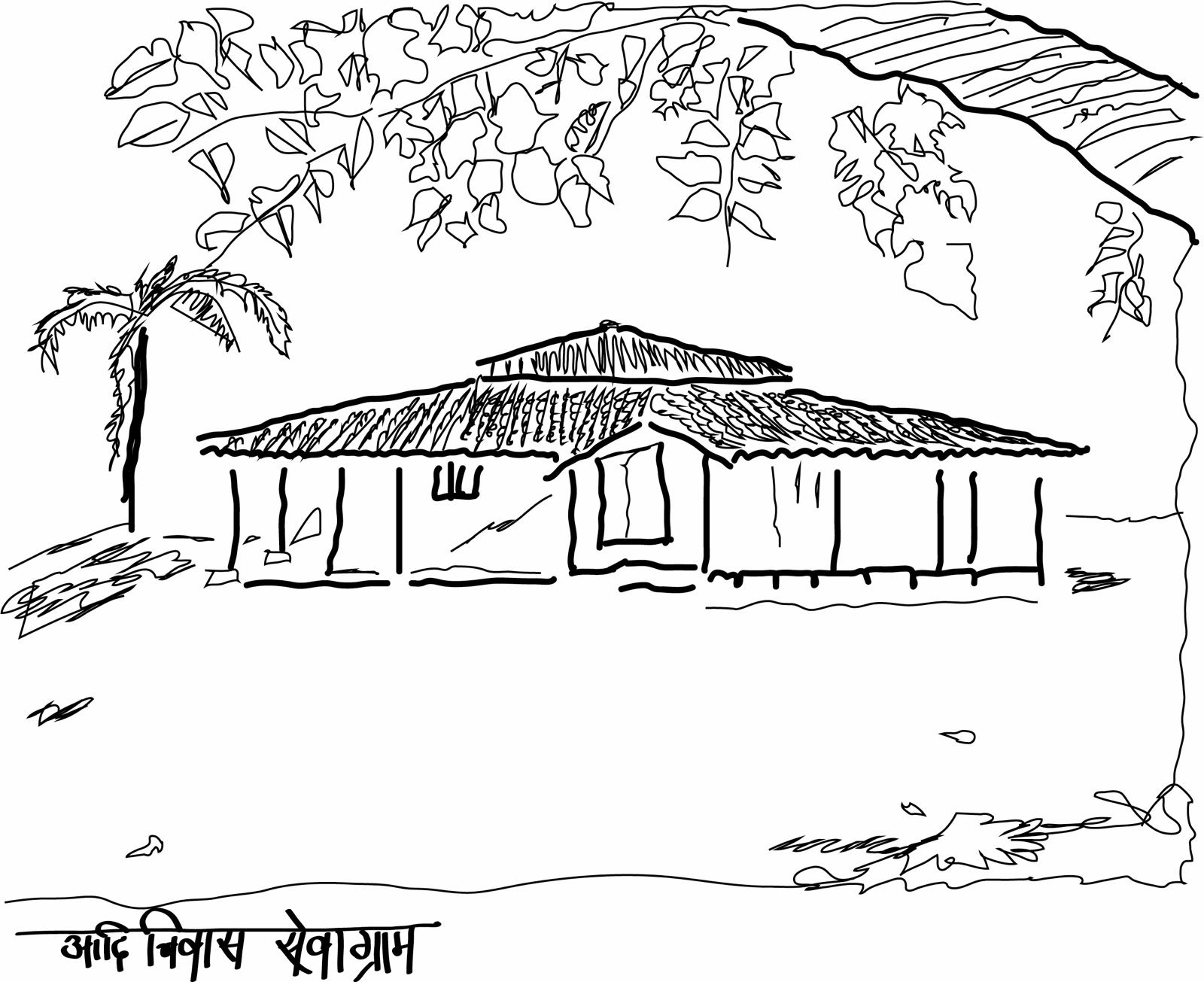Three Abodes of Bapu: An Artistic Tribute of Akhilesh Jha
Siby K. Joseph

Akhilesh Jha, a renowned Gramophone Historian and Civil Servant working in the Ministry of Rural Development and Panchayati Raj, embarked on a poignant journey to Sevagram Ashram in Wardha. His mission was to pay heartfelt tributes to the Father of the Nation, Mahatma Gandhi, on two significant occasions Gandhi Jayanti ( October 2) on the 77th anniversary of his martyrdom (January 30) .
As part of the tribute, on January 30, 2025 Akhilesh played rare and historical records paying tributes to Mahatma on a gramophone at the Open Air Theatre of the Library and Research Centre of Sevagram Ashram Pratishthan, Wardha . The historic records transported the audience back in time, evoking a sense of nostalgia and reverence for the Mahatma’s profound legacy.

Deeply moved by the experience, Akhilesh felt inspired to create an artistic tribute. While sitting at the airport awaiting his return journey, he sketched three drawings that captured the essence of Gandhi’s humble abodes at Sevagram Ashram. These drawings poignantly depicted the three huts Gandhi lived in from 1936 to 1946.
Gandhi arrived at Sevagram on April 30, 1936, and initially stayed in a makeshift arrangement. On June 16, 1936, he shifted to his first hut, which was still under construction. This humble abode marked the beginning of his life at Sevagram Ashram. This is known as Adi Niwas
In 1941, Gandhi moved to the iconic Bapu Kuti, which was originally used by Madeleine Slade, also known Mira Behn , a British noblewoman who renounced her luxurious life to join Gandhi’s Satyagraha ashram at Sabarmati. The hut underwent extension work to cater to Gandhi’s requirements, and it was here that he lived until 1946.
Gandhi’s last residence at Sevagram Ashram was Akhri Niwas, where he stayed until August 1946, when he left the ashram for his mission of communal unity.
Akhilesh aptly titled these sketches “The Three Abodes of Bapu,” encapsulating the simplicity, humility, and profound wisdom that defined Gandhi’s life and philosophy. This creative tribute serves as a testament to the enduring impact of Gandhi’s ideals and the timeless appeal of his message on people from different walks of life .

Bapu’s humble hut at Sevagram Ashram has been a source of inspiration for philosophers and thinkers from around the world. Notably, the philosopher Ivan Illich, who visited the ashram, drew profound insights from the simplicity and elegance of Bapu’s hut. During his visit, Illich delivered a thought-provoking speech in a Conference titled “Message of Bapu’s Hut,” reflecting on the deeper significance of Gandhi’s austere dwelling.
About the Author
Dr. Siby K. Joseph is Director Sri Jamnalal Bajaj Memorial Library and Research Centre for Gandhian Studies, Sevagram Ashram , Wardha Maharashtra
Email: directorjbmlrc@gmail.com





